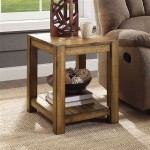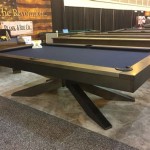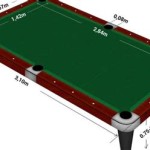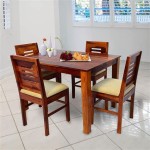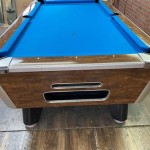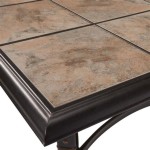Modern Lighting Over Dining Room Table: A Comprehensive Guide
The dining room table is often the focal point of a home, a place for shared meals, conversations, and memories. Consequently, the lighting above it plays a crucial role in setting the mood, enhancing functionality, and contributing to the overall aesthetic of the space. Modern lighting options for dining rooms offer a vast array of styles, technologies, and functionalities, providing homeowners with numerous ways to create the perfect ambiance.
Selecting the appropriate lighting fixture requires careful consideration of several factors, including the table size, the room's dimensions, the existing décor, and the desired level of illumination. This article explores key considerations for choosing modern lighting over a dining room table, highlighting various fixture types and providing guidance on achieving optimal results.
Understanding Lighting Layers and Ambiance
Effective dining room lighting involves a layered approach, combining different types of light to create a balanced and inviting atmosphere. Three primary types of lighting contribute to a well-lit dining space: ambient lighting, task lighting, and accent lighting.
Ambient lighting, also known as general lighting, provides overall illumination to the room. It should be comfortable and not overly bright, serving as a foundation for the other lighting layers. Fixtures such as recessed lighting, chandeliers, or larger pendants can provide ambient light. Dimmers are highly recommended for ambient lighting, allowing for adjustments based on the activity and time of day.
Task lighting focuses on illuminating specific areas for specific activities, such as eating, reading, or working. In the dining room, the primary task light is the fixture directly above the table. This light should be bright enough to adequately illuminate the food and allow for easy conversation, but not so harsh as to cause glare or discomfort. Pendants, chandeliers, and linear suspensions are common choices for task lighting over a dining room table.
Accent lighting is used to highlight specific features in the room, such as artwork, architectural details, or decorative objects. Spotlights, track lighting, or wall sconces can be used to create visual interest and add depth to the space. While not directly related to the table lighting, accent lighting contributes to the overall ambiance and should be considered when planning the lighting design.
The interplay of these three lighting layers is crucial for creating a dynamic and functional dining room. By carefully selecting and positioning each type of light, one can achieve a well-balanced and aesthetically pleasing environment.
Exploring Modern Lighting Fixture Types
The modern lighting market offers a wide range of fixture types suitable for dining room tables. Understanding the characteristics of each type allows for a more informed decision-making process.
Pendant lights are a popular choice for dining rooms, offering a versatile range of styles, sizes, and materials. A single pendant can be effective for smaller tables, while multiple pendants can be used to illuminate larger surfaces. The height of the pendant is crucial; it should hang low enough to provide adequate illumination without obstructing the view or causing glare. Typically, the bottom of the pendant should be 30-36 inches above the table surface.
Chandeliers offer a more formal and decorative option, adding a touch of elegance and sophistication to the dining room. Modern chandeliers often feature sleek lines, geometric shapes, and minimalist designs, departing from the traditional ornate styles. The size of the chandelier should be proportionate to the table and room dimensions. A general rule of thumb is to add the length and width of the room in feet to determine the chandelier's diameter in inches. For example, a room that is 12 feet long and 10 feet wide would require a chandelier with a diameter of approximately 22 inches.
Linear suspension lights are an excellent choice for rectangular dining tables, providing even illumination across the entire surface. These fixtures typically feature a long, narrow design with multiple light sources. Linear suspensions are available in various styles, from minimalist designs to more elaborate configurations. The length of the suspension should be approximately one-half to two-thirds the length of the table.
Recessed lighting, when used in conjunction with other fixtures, can provide ambient lighting and supplement the task lighting above the table. Recessed lights should be evenly spaced throughout the room to provide consistent illumination. Dimmers are essential for recessed lighting, allowing for adjustments based on the desired mood.
Track lighting offers a flexible solution for directing light to specific areas of the dining room. Track lights consist of multiple light heads that can be adjusted to focus on artwork, architectural details, or the dining table itself. Track lighting is particularly useful in rooms with low ceilings or where traditional pendant lights are not feasible.
Each fixture type offers unique aesthetic and functional benefits. The selection should align with the overall design of the dining room and the specific lighting needs of the space.
Key Considerations for Choosing the Right Lighting
Beyond the fixture type, several other factors influence the effectiveness and suitability of dining room lighting. These considerations include the size and shape of the table, the ceiling height, the style of the room, and the desired level of illumination.
The size and shape of the dining table directly impact the appropriate size and configuration of the lighting fixture. For small, round tables, a single pendant light or a small chandelier may be sufficient. For larger, rectangular tables, multiple pendants or a linear suspension light are often more appropriate. The fixture should be centered above the table to ensure even illumination and visual balance.
Ceiling height is a critical factor in determining the appropriate hanging height of the fixture. In rooms with low ceilings, flush-mount fixtures or recessed lighting may be the best option. For rooms with high ceilings, longer pendants or chandeliers can be used to fill the vertical space and create a more dramatic effect. The general rule is to maintain a clearance of at least 7 feet between the floor and the bottom of the fixture.
The style of the lighting fixture should complement the overall aesthetic of the dining room. In modern dining rooms, minimalist pendants, geometric chandeliers, and sleek linear suspensions are popular choices. In more traditional dining rooms, ornate chandeliers with intricate details may be more appropriate. The finish of the fixture should also coordinate with the other hardware and furnishings in the room.
The amount of light needed in a dining room depends on the size of the room, the color of the walls, and the desired level of illumination. A general guideline is to provide approximately 2.5 watts per square foot for ambient lighting and 3-4 watts per square foot for task lighting. Using LED bulbs with a color temperature of 2700K to 3000K can create a warm and inviting atmosphere. Dimmers are highly recommended for all dining room lighting, allowing for adjustments based on the activity and time of day.
Selecting the appropriate lighting for a dining room table involves a careful balance of aesthetics and functionality. By considering these key factors, homeowners can create a dining space that is both visually appealing and well-suited for shared meals and gatherings.
Selecting the right bulb is also important. LED bulbs are the preferred choice due to their energy efficiency, long lifespan, and variety of color temperatures. Warm white light (2700K-3000K) is generally recommended for dining rooms as it creates a cozy and inviting atmosphere. However, the specific color temperature may depend on the individual's preference and the overall design of the space. It's also worth considering smart bulbs which allow for adjustable brightness and color temperature controlled via a smartphone or voice assistant.
The positioning of the light switch is another small but significant detail. Ideally, the switch should be located near the entrance to the dining room for easy access. Installing a dimmer switch allows for adjusting the brightness of the lighting, which is especially useful for creating different moods and settings.
Lastly, it's important to consider the maintenance of the lighting fixture. Select fixtures that are easy to clean and maintain. Dust and grime can accumulate over time, reducing the brightness and lifespan of the bulbs. Regularly cleaning the fixture will help to keep it looking its best and functioning properly.

Modern Style Golden Black Led Spot Light Chandelier For Dining Room Kitchen Bar Living Bedroom Table

30 Best Dining Room Light Fixtures Chandelier Pendant Lighting For Ceilings

How To Choose The Perfect Dining Room Light Fixture Graham S Living

51 Dining Room Chandeliers With Tips On Right Sizes And How To Hang Them

Buy Dining Room Lighting Blown Glass Chandelier Unique Ceiling Contemporary Light Fixture Modern For Dine Online In Etsy

Hdc Modern Copper Glass Hanging Pendant Chandelier Light For Kitchen Living Room Bedroom Set Of 3

15 Modern Dining Room Lighting Ideas That Ll Shine In 2024 Hgtv

10 Modern Kitchen Lighting Ideas 1stoplighting

Dining Room Lighting Ideas For Your Home Designcafe

Top 11 Small Dining Room Lighting Ideas You Should Know About Crompton

